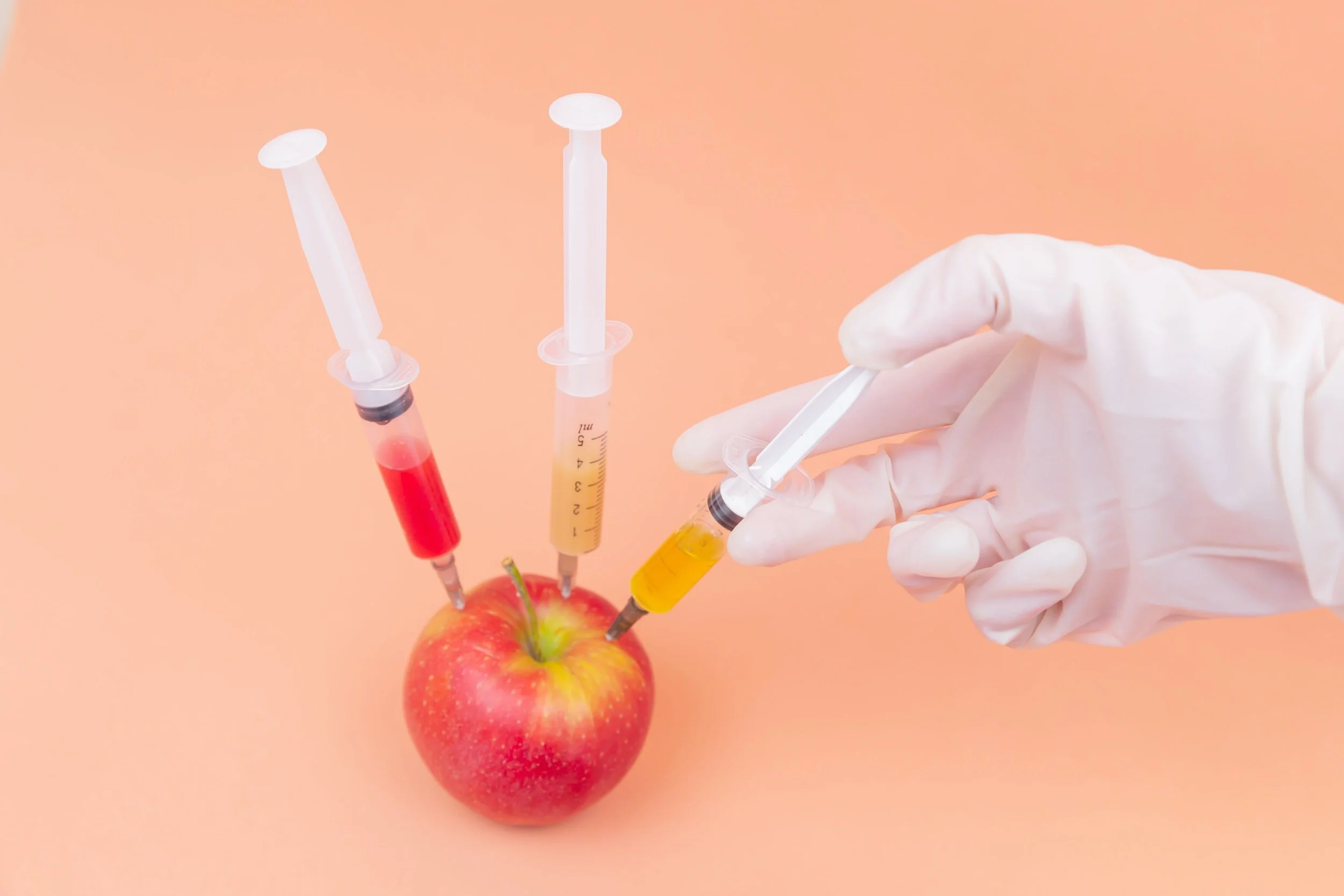How the Food We Eat is killing Us: Part 1, Does the FDA Deserve Our Trust?
The US FDA and it’s Role in Our Health
Have you ever really looked at the food and ingredients you’re eating? Like really researched some of them, I’m certain, you’ve never heard of?
If you’re someone who thinks that the FDA, government, even the pharmaceutical industry truly care about what’s best for us, this might not be the post for you. I gave up on that belief years ago. My mom had an extremely rare type of cancer and I did extensive research on not just cancer, but cancer treatments.
It seemed odd to me that in 100 years of working to cure cancer, the only treatments that were really available were chemo, radiation and/or surgery. It also seemed strange to me the ENDLESS variety of EXPENSIVE pills cancer patients seemed to have to take. Chemo makes you sick, so you take a pill. That pill causes something else, so you take another pill. That pill does something entirely different, but guess what? There’s a pill you can take. Of course, that endless circle of pills cost a pretty penny.
At that time (2006), it occurred to me that there were people making a lot of money off of us not just getting sick, but staying sick. And once I saw the financial connections of lobbyists, the pharmaceutical industry and our politicians (and if you think these connections are only with one party or another, well, you’re naïve), I was astonished. It’s a web so twisted and tangled it makes me sick just thinking about it (I bet they’d gladly let me pay for a pill to help with that😉).
Anyways, I tell you that because in 2006, my trust for those groups of people became non-existent. That’s also about the time I really started looking into food labels and realized there are SO many awful ingredients linked to horrible diseases: cancer, heart disease, Alzheimer’s, and so much more, that we’re making part of our daily diets.
And we do nothing about it.
Because the government says, the FDA (or FDA guidance) says, the pharmaceutical industry says. So it must be ok.
And in regards to most of the ingredients I talk about in Part 2, the FDA, their researchers, the politicians, the brands producing the food, are all happy to share that whatever it is, “it’s such a trace amount, that it really won’t harm you.”
At Some Point, a Trace Ingredient is No Longer Trace
I actually believe that.
The problem as I see it, is that we aren’t consuming these foods in trace amounts. Harmful preservatives are literally in everything. From the cereal we eat in the morning (even the “healthy” ones), to the sandwich at lunch, to the dinners we’ve come to love. Essentially, if you don’t cook/bake every single thing fresh, you’re consuming these nasty ingredients. And remember, these trace amounts are based on “1 serving.” Have you ever measured a “serving,” of anything? My guess is that we’re getting well over the recommend serving the FDA has approved for the label.
Oh, and many of the ingredients I’m referencing aren’t just things we’re ingesting, but are also prevalent in skincare, soaps, oral care products and so much more.
So at what point are they no longer trace?
According to my favorite federal agency, the Food and Drug Administration (FDA), all food additives are carefully regulated by federal authorities and a variety of international organizations to ensure the food we’re eating is safe. And, they would never accept donations from lobbyists who wanted a particular ingredient labeled “safe.” Like ever. And if they were instrumental in making sure a questionable ingredient was labeled safe, they definitely wouldn’t get promoted.
Or would they?
A Suspect Past, FDA Drug Approval
Let’s look at the current head of the FDA, Janet Woodcock. Although this information is in regards to pharmaceuticals, I’m sure the same rules apply to other bodies of the FDA. Woodcock previously served as the director of the FDA’s Center for Drug Evaluation and Research, where she was integral in the approval of opioids, even for children 11-16 years of age. As pointed out by this article from The Defender, and as revealed by 60 Minutes, after secret meetings between the FDA and Purdue Pharma, the FDA chose to ignore scientific data, instead allowing the OxyContin label to read, “around the clock…for an extended period of time.”
Again, according to 60 minutes, Purdue was ecstatic about the label change, saying, “The action by the FDA…has created enormous opportunities.” Purdue’s sales tripled. How nice.
This label change of course led to a huge opioid crisis, all while our pharmaceutical friends profited billions and billions of dollars.
This article from USA Today goes into even more detail. It shares that while short-term studies had been conducted on Oxy, typically for end-of-life pain management, the FDA quickly approved it for much broader, long term use, even though clinical trials hadn’t been done to determine if it was less likely to be addictive or abused than other opioid painkillers. “The FDA allowed Purdue to claim on Oxy’s insert that its delayed absorption was, ‘believed to reduce the abuse liability.’” They claimed addiction was rare, and the marketing team was able to push this drug as being safer than any opioid competitor.
And in 2001, when advocates were arguing for change in Oxy’s label, Woodcock was still chief of the FDA’s watchdog group, rebuffing most of the proposed reforms. And here’s where the story gets even more sketchy. Still referencing the USA Today article, although it was becoming more and more obvious that the prescribing of opioids was exploding, and overdoses soon followed, the FDA convened an advisory panel of 10 experts. Those experts were to decide whether the agency should forbid dispensing opioids for chronic pain.
What was never disclosed by Woodcock is that 5 of those 10 “experts,” were paid by Purdue as panelists or through it’s speaker program. Three others had done similar work for other opioid manufactures. They sound a little like glorified influencers, only instead of pushing a product, they were pushing a drug. A highly addictive one at that.
Now, I know this might come as a shock, BUT, the panel recommended no change in the FDA’s labeling of Oxy. Instead, the more mild Oxycontin side effects weren’t hidden (things like nausea, dry mouth, drowsiness, etc.), but the fact that this drug was addictive, was.
Woodcock and her FDA then took six more years before removing the “addiction was rare” claim on the Oxy label.
USA Today also gave extensive details of how Woodcock oversaw the approval of numerous other controversial opioid painkillers. An FDA advisory panel had voted 11-2 AGAINST approving Zohydro, a narcotic painkiller 5-10 times more powerful than Vicodin, however, Woodcock and the FDA pushed it through.
Once they did, 29 state attorneys general and 40 medical and addiction experts urged the FDA to reconsider. Joe Manchin even introduced a bill to compel the FDA to reverse it’s decision.
Instead of reconsidering, Woodcock buckled down on her opioid position, approving a successor to the opioid Opana. A year later, Woodcock, along with Sharon Hertz, the director of the FDA’s division of Anesthesia, Analgesia, and Addiction included children, as young as 11, in OxyContin’s indication.
Even though a presidential Commission on Combatting Drug Addiction and the Opioid Crisis concluded in 2017 that the FDA provided “inadequate oversight,” in part causing the nation’s opioid epidemic, the FDA continued to approve controversial opioids.
You would think the FDA might start to think twice about the the narcotics they approved. One would think. But, as late as 2018, the FDA approved already controversial Dsuvia, a sufentanil pill 10 times more powerful that fentanyl. Many in the medical community argued there really was no need for opioid treatment this powerful - pain management was already available in multiple forms.
Don’t worry though everyone, the FDA has instituted really “tight restrictions” to avoid misuse of Dsuvia. If it wasn’t so sad, the ridiculousness would be laughable.
While eventually Purdue Pharma settled in lawsuits from states and local governments, having to pay out around $12 billion for them knowingly misleading the public, the FDA was, for the most part, not held accountable in any way at all.
Ladies and Gentleman, Your Commissioner of FDA (Sketchiness) is…
And after all of that, in spite of her having a direct roll in the crisis, Janet Woodcock sits atop the FDA throne. US government corruption at its finest.
Get it yet? The FDA might not be as concerned about our safety as you would like to think, which leads me to why, after all my research on ingredients, I don’t trust them any further than I can throw them. Why should I?
Click below to read Part 2, where I detail some of the more controversial preservatives approved by the FDA, that we’re likely consuming everyday.
I highly recommend reading the above mentioned articles and watch the 60 Minutes I linked to as well.


